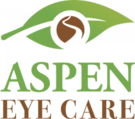
Every year, we observe Children's Eye Health and Safety Month, a time dedicated to raising awareness about the importance of eye health in children across Canada.
While regular children’s eye tests and protective eyewear are crucial, knowing how genetics can influence your child's vision can help you take proactive steps to ensure their eyes remain healthy and strong.
At Aspen Eye Care in Sherwood Park, we offer comprehensive eye care services to ensure that your child's vision is protected and nurtured from an early age.
The Role of Genetics in Your Child’s Eye Health
Genetics play a significant role in determining many aspects of a child's health, including their vision. Just as a child inherits their parents' hair colour or height, they can also inherit the likelihood of developing certain eye conditions. Some genetic eye issues include:
- Myopia (Nearsightedness): If one or both parents are nearsighted, there is a high chance their child will also develop myopia. This eye condition causes blurry distance vision and can impact a child's ability to see the board or participate in outdoor activities.
- Hyperopia (Farsightedness): Like myopia, hyperopia can also be passed down through generations. It causes close objects to appear blurry and can make reading and other close-up tasks challenging for children.
- Astigmatism: Astigmatism occurs when the cornea is irregularly shaped, leading to blurred or distorted vision.
- Retinal Thinning: A condition where the retina becomes thinner over time, often associated with genetic factors. It increases the risk of retinal detachment, which may require surgical intervention to preserve vision.
- Amblyopia (Lazy Eye) & Strabismus (Crossed Eyes): A family history of these vision problems can increase the likelihood that a child will develop them.
- Congenital Glaucoma: This rare but serious condition can be present at birth and is often inherited. It leads to increased pressure in the eye, damaging the optic nerve and potentially leading to vision loss if not treated with surgery for the eyes.
Managing and Treating Genetic Eye Conditions
Managing genetic eye conditions involves a combination of regular eye care, lifestyle adjustments, and sometimes medical interventions:
Corrective Lenses
For conditions like myopia, hyperopia, and astigmatism, corrective lenses such as glasses or contact lenses are often the first line of treatment. These lenses help your child see clearly and perform daily tasks without strain.
Vision Therapy
For conditions such as amblyopia (lazy eye) or strabismus (crossed eyes), your child may be referred to a vision therapist. This therapy involves a series of exercises designed to strengthen the eyes and improve coordination.
Surgical Interventions
In more severe cases, such as congenital glaucoma or significant retinal thinning, surgical intervention may be necessary. These procedures are typically recommended to prevent further vision loss and preserve the remaining vision.
What Parents with a Family History of Eye Issues Should Know
If you have a family history of eye conditions, it is essential to be vigilant about your child’s eye health. Here is what you can do to protect their vision:
- Early and Regular Eye Vision Checks: Children with a family history of eye problems should have their first eye vision check early, ideally before their first birthday. After that, routine follow-up exams with a pediatric eye doctor are essential to monitor vision changes.
- Monitor for Vision Trouble: Be aware of signs that your child may be developing vision problems, such as squinting, frequent eye rubbing, tilting their head to see better, or difficulty with reading or other close-up tasks. If you notice any of these symptoms, schedule an eye test right away with a kids optometrist near you.
- Consider Preventative Measures: Some eye conditions, like myopia, can be managed or slowed down with early intervention. Discuss treatment options like special corrective lenses or vision therapy to reduce the risk of worsening vision.
- Educate Your Child: As your child grows older, it is important to teach them about their family’s eye health history. This can empower them to take responsibility for their vision care as they mature.
- Understand the Parts of the Eye: Educating yourself and your child about the parts of the eye can help you both understand how vision works and the importance of maintaining eye health.

Alternating Saturdays: 10-4 (please call)*
We are offering shopping hours on Saturdays (alternating).